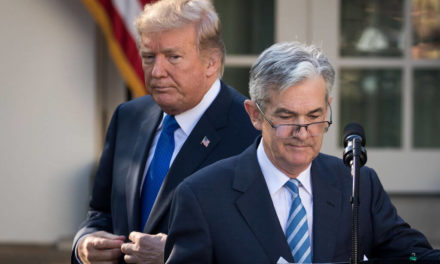The first seven trading sessions of 2019 have been tremendous for investors. In fact, it’s the best start Wall Street has seen in 13 years (2006), which says a lot considering we’ve just seen the longest bull market run in history.
By market close Thursday, the Dow was up 2.89 percent on the year, its best first seven days since 2006, when DJIA stocks rose 3.04 percent.
The S&P 500 gave investors a 3.68 percent bump, down slightly from the 3.68 percent rise in 2006.
Likewise, the Nasdaq saw a 5.3 percent rise, the best since its 2006 returns hit 5.72 percent.
Thursday’s late-session rally came on the heels of Fed Chair Jerome Powell’s comments on the health of the economy while also reaffirming the Fed’s cognizance of stresses on the stock market amid interest rate hikes. Powell said much the same last week, calming anxious investors in the face of December’s massive losses that looked like they would lead into a terrible start to 2019.
Of course, no one knows if the great start bodes well for the rest of the year.
Per MarketWatch:
For one, January’s early convulsions had put the S&P 500 on pace for its worst start to a year in about two decades, perhaps driving home the point that the current market dynamic leaves investors vulnerable to whipsaw action.
On top of that, the solid gains achieved in 2006 were soon followed by a financial crisis for the ages that took hold in earnest in 2008.
But even a few declines might not translate to an unwind of what has been a remarkable bounce-back in equities. “Look, we’re up like 10% since the day before Christmas and there’s more overhead resistance than my SAT scores so yea, a few down sessions are inevitable,” wrote Michael Antonelli, managing director of institutional sales and trading at Robert W. Baird & Co., in a Thursday financial blog.
“If I had to guess what market prognosticators are expecting I’d lean towards ‘retest in the coming months’ over ‘that was the low’ but we’ll only know in hindsight and that’s what makes stock market investing so hard,” he wrote.
Markets aren’t without concerns. Retailer Macy’s M, -0.84% put in its worst daily decline in its history dating back to 1992, highlighting weakness in the consumer, the heart of any developed economy. Additionally, Powell’s comforting comments on Thursday also came with a proviso: that the Fed’s crisis-era balance sheet would be smaller. That statement may give some pause to buyers who have fretted that a further wind down of the central bank’s roughly $4.1 billion asset portfolio may result in tighter financial conditions and more stumbles lower for stocks.
A partial government shutdown, which on Saturday will mark the longest on record, also may also eat away at investor confidence.




